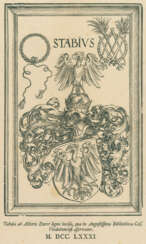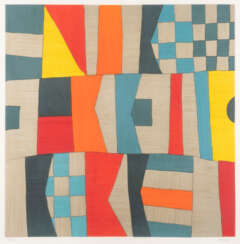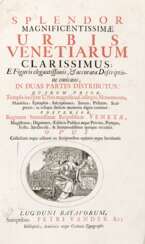johann beer d.ä

Johannes Post is a German artist.
He studied at the Hamburg University of Fine Arts and at the Cologne Academy of Media Arts. Post works interdisciplinarily in the fields of experimental photography, video and sculpture.


Johannes Robert Becher was a German politician, poet, and novelist.
As a young man he was part of the literary avant-garde, writing in the style of Expressionism. As a communist, Becher was evacuated from the Nazi regime to the USSR during World War II, then returned to Germany, where he was among the founders of the GDR Academy of Arts in Berlin and was its president. He was also Minister of Culture of the German Democratic Republic from 1954 to 1958.


Johannes von Valkenburg was a Franciscan monk of the Friars Minor in Cologne, a calligrapher and illustrator.
He is known for having written, decorated and illustrated a manuscript for the Franciscan monastery in Cologne at the end of the 13th century and for having made two copies of it. One is in the Archdiocesan Diocesan and Cathedral Library in Cologne, the other in the University and State Library in Bonn. On the title pages of these rarities is an inscription indicating Valkenburg's authorship.


Johann George Hossauer was a German jewelry artist, entrepreneur and inventor.
Hossauer began working at the bronze factory of Werner & Mietke in Berlin and trained under the jeweler Henri de Ruolz. In 1819, King Friedrich Wilhelm III of Prussia financially supported the factory, which was managed by Hossauer. This factory produced articles of platinum, gold, silver, bronze, gilded and silvered copper and employed up to 100 people. At one of the first trade exhibitions in Berlin, the master received a gold medal for his work, and in 1826 the king granted him the title of jeweler of His Majesty the King.
As a prominent Berlin jeweler, Hossauer executed several orders of the Prussian court, including the Pour Le Merite and the Order of St. John, and also participated in the creation of the Russian Order of St. Vladimir and the Hanoverian House Order of St. George. He created silver table sets for Prussian princes and fulfilled other prestigious orders, produced jewelry, medals, and numerous pieces of gold and silverware.
In 1845, Hossauer sold his patent for the electroplating process to Werner von Siemens, and ten years later he was appointed a judge at the World's Fair in Paris.
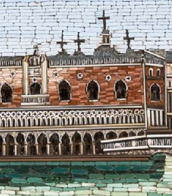

Johann Peter Hasenclever was a German painter of the first half of the 19th century. He is known as a painter, a representative of the Düsseldorf school of art, who is considered one of the founders of German genre painting.
Hasenclever began his work by interpreting biblical, mythological and romantic subjects, but eventually found his calling in humorous scenes from bourgeois life, especially Pyrenean towns and cities. Among his famous works are "The Amusing Examination," "The Reading Room," and "The Trial of Wine," distributed in engravings and lithographs.


Johann Georg Müller was a German painter and graphic artist. He was studied at the Academy of Fine Arts in Munich.
Müller's work was heavily influenced by the Expressionist and Surrealist movements, and his paintings and graphic works often featured bold colors and abstract, dreamlike imagery. He was known for his use of symbolic motifs and his interest in mythological and religious themes.
During World War II, Müller was drafted into the German army and served on the Eastern Front. After the war, he returned to Munich and resumed his artistic career. He became a member of the German Expressionist group "Die Neue Gruppe" and participated in several exhibitions throughout Europe.
His work continues to be exhibited and studied around the world, and his legacy has had a significant impact on the development of modern and contemporary art in Germany and beyond.

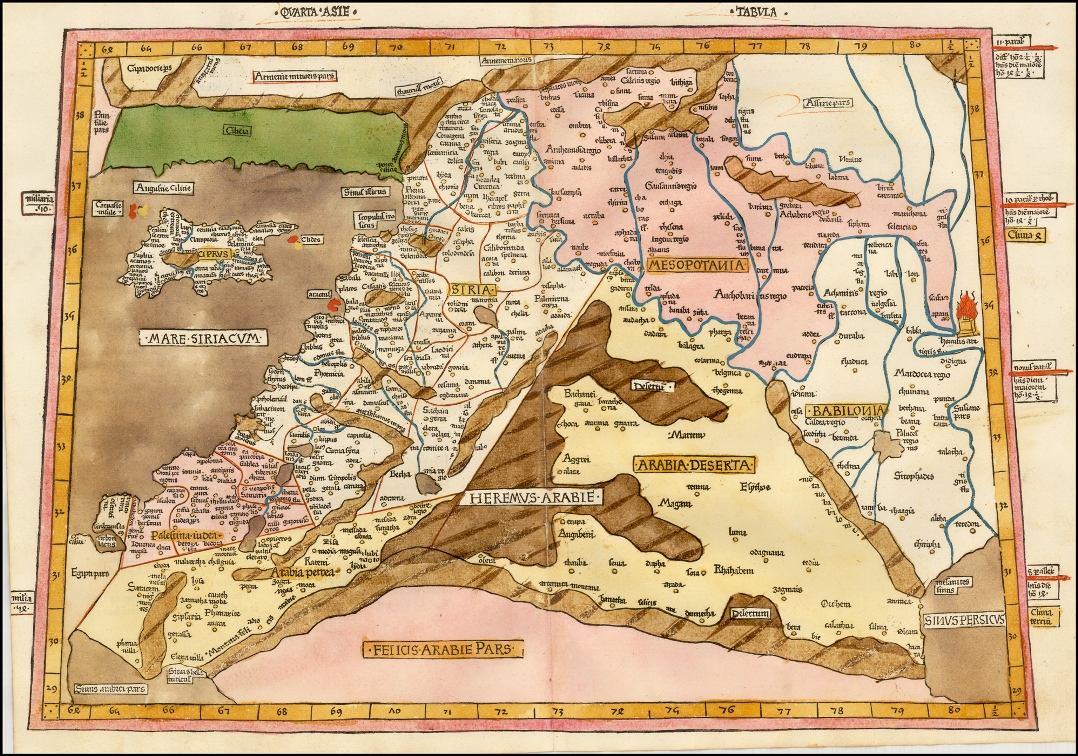
Johann Reger, also known as Johannes Reger and Hannss Reger, was a German publisher and printer.
He is known to have worked in Ulm, where he purchased a printing press where he printed and published a whole series of books. Among these were Ptolemy's Geographia and his successful treatise De locis ac mirabilibus mundi, an encyclopedic description of the inhabited world and the wonders of the earth.


Johann Peter Hasenclever was a German painter of the first half of the 19th century. He is known as a painter, a representative of the Düsseldorf school of art, who is considered one of the founders of German genre painting.
Hasenclever began his work by interpreting biblical, mythological and romantic subjects, but eventually found his calling in humorous scenes from bourgeois life, especially Pyrenean towns and cities. Among his famous works are "The Amusing Examination," "The Reading Room," and "The Trial of Wine," distributed in engravings and lithographs.


Johann Georg Müller was a German painter and graphic artist. He was studied at the Academy of Fine Arts in Munich.
Müller's work was heavily influenced by the Expressionist and Surrealist movements, and his paintings and graphic works often featured bold colors and abstract, dreamlike imagery. He was known for his use of symbolic motifs and his interest in mythological and religious themes.
During World War II, Müller was drafted into the German army and served on the Eastern Front. After the war, he returned to Munich and resumed his artistic career. He became a member of the German Expressionist group "Die Neue Gruppe" and participated in several exhibitions throughout Europe.
His work continues to be exhibited and studied around the world, and his legacy has had a significant impact on the development of modern and contemporary art in Germany and beyond.


Albrecht Dürer, born on May 21, 1471 in Nuremberg, Germany, is widely regarded as the greatest German Renaissance painter. His contribution to painting and engraving is quite significant and has left a notable mark on the art world. Dürer's early life was spent in Nuremberg, a city that played a crucial role in his development as an artist and was also the site of his death on April 6, 1528. He was the son of the goldsmith Albrecht Dürer the Elder, from whom he initially learned the basics of drawing and metalworking.
Dürer's work is characterized by a combination of Gothic elements with the emerging Renaissance style, which is evident in his woodcuts and engravings. His oeuvre encompasses many themes, including religious works, altarpieces, portraits, and self-portraits. His outstanding prints, such as The Knight, Death and the Devil (1513), St. Jerome in his Study (1514) and Melencolia I (1514), are known for their intricate detail and artistic skill. Dürer was also one of the earliest European landscape painters, as evidenced by his watercolor paintings.
Equally significant are his theoretical writings on mathematics, perspective, and ideal proportions in art. Dürer was not only an artist but also a keen intellectual, his interests encompassing various aspects of culture and science. He served as court painter to Holy Roman Emperors Maximilian I and Charles V, completing several significant art projects for them. Dürer's keen mind and versatile interests brought him into contact with the most prominent figures of his time, including theologians and scientists of the Reformation era.
Dürer's self-portraits are particularly famous, demonstrating not only his artistic skill but also his self-awareness and personal style. These portraits attest to his growing success and confidence as an artist. Dürer's legacy is immense; he influenced not only the art of his time, but also left an indelible mark on the history of European art.
For those interested in the work and legacy of Albrecht Dürer, we recommend subscribing to our updates. Our subscription service is designed to provide information about new sales and auction events related to this remarkable artist. Join us to keep up to date on the latest art and antiques related to Albrecht Dürer.


Johannes Brahms was a great German composer, conductor and pianist of the Romantic era.
Johannes showed a talent for music early on, learning to play the piano and earning a living from it; in 1850 he met the Hungarian violinist of Jewish origin Eduard Remenyi - from him he learned gypsy music, which often manifested itself in his later work.
In 1853, Brahms had a fateful encounter with the composer Robert Schumann. Schumann wrote an enthusiastic article about Brahms in a periodical, and from that moment the general public became aware of the young talent. In 1859 Brahms was appointed conductor of the women's choir in Hamburg, which gave him ample time for his own work. During this period he composed two Serenades for orchestra and a String Sextet in B flat major, and completed the Piano Concerto No 1 in D minor. A little later he settled in Vienna and directed the Singakademie choir.
In 1868 Brahms completed his most famous choral work, the German Requiem, which is still considered one of the most important works of 19th century choral music. The following year he composed two volumes of Hungarian Dances for piano duet - these were brilliant arrangements of gypsy melodies, their success was phenomenal, and they were performed all over the world.
For the rest of his life, Brahms never stopped composing works in a wide variety of genres: symphonies, concertos, chamber music, piano works, choral works, waltzes and songs. Brahms was a great master of the symphonic and sonata style of the second half of the nineteenth century, which placed him in the first ranks of German composers. He made his last concert appearance in March 1897, and died of cancer in Vienna in April.

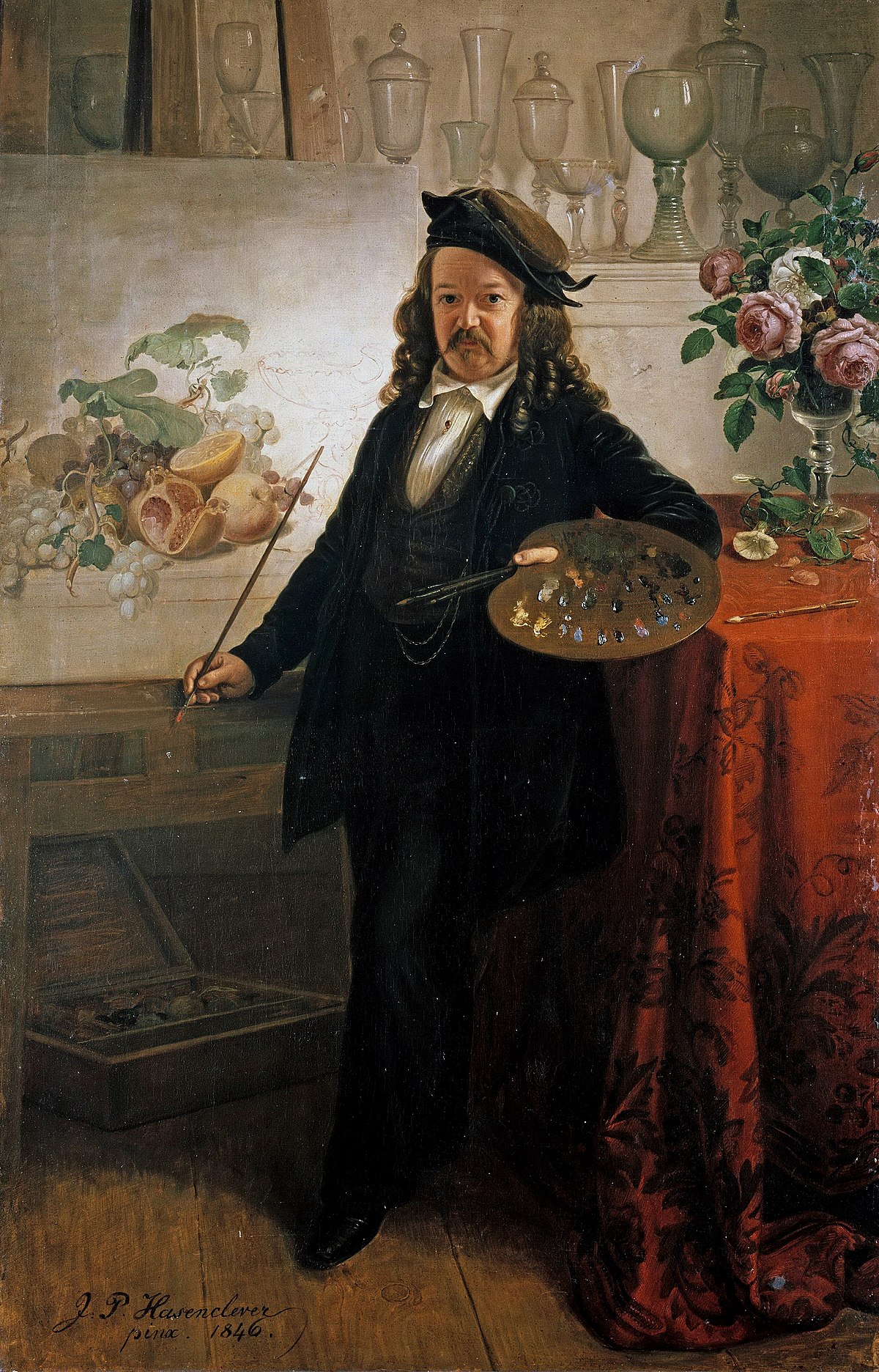
Johann Wilhelm Preyer was a German painter of the second half of the 19th century. He is known as a painter, a representative of the Düsseldorf school of painting.
Preyer specialized in still lifes with flowers and fruit, which were notable for their detailed and meticulous elaboration. He is considered the preeminent painter of this genre of his era. His work is common in the United States, but there are also important pieces in the Berlin National Gallery and other German museums.
Preyer was one of the first representatives of the Düsseldorf School and was instrumental in founding the Düsseldorf Artists' Association.



























